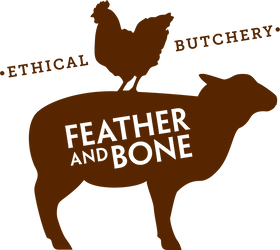Is it ethical to eat suckling pig?
First published on 29 September 2014
We’d like to take this opportunity to respond to recent accusations on Twitter that we are unethical because we sell weaned, male suckling pigs as young as seven to eight weeks old.
Farming in harmony with natural systems is a complex art and full of challenging decisions. The tensions between supply, demand and sustainability are rarely resolved without some compromise. As you know, we’re not farmers, but we do our best to understand how the farms we work with are managed so that we can trust them in the same way that we ask you to trust us.
Being well-informed is central to us making the right decisions for our business and to being able to provide the transparent connection between the producer and customer that is key to our offer. In that spirit, please find below the facts as we understand them from our farmers and on which we base our purchasing decisions. You can decide for yourself if you think our practice is ethical.
- Pig gestation takes three months, three weeks and three days.
- Free range farms wean piglets at between six to eight weeks to allow sows to farrow (produce a litter) twice a year.
- Two litters annually per breeding sow is necessary to run a commercially viable farm.
- Hopefully, each sow will produce about 10 live piglets per litter or 20 piglets per year, half of which may be male.
- So, if a farm has 30 breeding sows, it may be producing 600 piglets per year of which 300 or so may be male.
- Curiously, it seems that in winter this ratio changes and more males are born.
- Intensive pig farms aim for five farrowings over two years per breeding sow. This means weaning within three to four weeks.
- Uncastrated male pigs are harder to sell and worth less.
- This is largely because when a boar reaches sexual maturity, anywhere between four to six months, they produce hormones which may give their pork a particular taste commonly known as ‘boar taint’.
- One way to avoid boar taint is castration which removes the prospect of taint and means the farmer can grow the male pig (now called a barrow) out to a commercial porker weight. (Tammi Jonas wrote an excellent piece about Jonai Farms' decision to castrate their boars.)
- Another option is administering a drug such as Improvac which represses the hormones that produce boar taint.
- Some farmers also maintain that boar taint can be avoided if the boys and girls are kept separated so that the presence of the female pigs doesn’t trigger the release of the hormones.
Free range farms run low stocking densities in order to sustainably manage productive pasture. Too many pigs on the ground risks the pastures becoming unsustainably degraded. If five or six sows are farrowing at once, within three months there will be 50 pigs at 40-50 kg each on the ground. This means high feed costs and potentially greater numbers than the farmer would like to run on the available pasture.
Another way to deal with the problem of too many males is to sell them after weaning but before they mature and boar taint becomes a possibility. This removes the need to castrate or administer drugs and also provides cash flow for farmers who otherwise have to wait for five months until the grower pigs reach a marketable, ‘porker’ size of about 70 kilos.
Pillar Rock, Mayfield and Melanda Park are all certified Humane Choice Free Range and are all happy to sell male pigs aged between eight weeks to three months old. Read the Humane Choice Free Range Pork standards.
Coincidentally, Sandra Bannerman, owner and farmer at Mayfield Farm, mentioned this on 20 September as part of our weekly, regular correspondence about supply. This is what she wrote to us.
‘It is really great to have reduced numbers in our paddocks most of which consist of gilts (un-mated females) only! Thanks for taking some suckers and weaners.’
When we asked if she was happy for us to use the quote above, she and Ian Bannerman, her brother with whom she owns and runs Mayfield Farm, responded by providing more information and photos for us to share.
‘On Mayfield Farm, our sows all have a mobile shelter allocated to them when they are due to farrow. These shelters have wooden floors and are enclosed on 3 sides for protection from the elements. Each sow receives a half bale of grass which is mown on our farm to ensure that it is chemical free, and this she makes into a big nest ready for her babies.
When the piglets are born they commence a safe and happy life in a cosy environment. During the first week of their lives, they are restricted to a small 14’ paddock at the front of their hutch, and this enables them to bond with their mother without any interference from other sows and piglets who may be in that farrowing paddock. It also provides extra protection from possible predation.
At one week of age, mum and her piglets spend the next 7 weeks (we wean at 8 weeks) freely roaming their paddock (4 sows and piglets to 1 ha), enjoying the sunshine and rain on their backs, rooting for grubs and bugs or wallowing if the season requires. They are fed twice daily so that any problems can be monitored and rectified to ensure their safety and growth.
At between 6-8 weeks of age, suckling pigs or weaners are then ready for sale having enjoyed a wonderful but possibly shorter life than their siblings.
During winter, it would seem that male numbers increase in proportion to females. One recent litter of 9 had 1 female and 8 males. By selling suckling or weaner pigs we are able to better manage our property and turn over piglets which at porker weights would be more difficult to sell in large numbers.’
Ian and Sandra Bannerman, Mayfield Farm, 28/9/14




Dear DD Norris,
Thank you for your comment.
It’s true that weaning a piglet at 8 weeks is about 4 weeks earlier than the sow would naturally do so. It’s also true that sows can have up to 16 piglets and, even in the most benign conditions, the chances of all 16 thriving equally well are low. Unless there are very clear behavioural signals, it’s impossible to know if weaning a couple of piglets in a large litter four weeks early causes the sow distress. Based on the behaviour of most mammal mothers, we can presume that removing piglets early from a small litter might cause distress.
In the farming systems we support, there is nothing to be gained by causing animals distress and everything to be lost. So the farmers take great care to intervene as little as possible. Routinely removing immature animals from their mothers just doesn’t happen.
Unfortunately the same can’t be said of the dairy industry which, as you’d know, is based entirely on weaning calves at five days or so. For some reason, the world doesn’t seem to have a problem with this and people who are avowed vegetarians due to concerns about eating animals are happy to buy commercial milk without a second thought.
Strange world.
I couldn’t in all conscience eat an 8 week old baby mammal. I don’t believe for a moment mother and piglet don’t suffer emotional trauma at being torn apart after just 8 weeks, when the infant should still be nursing. Dress it up any way you like, but the fact is in natural conditions weaning is a gradual process, only completed when the piglet is 3-5 months old. Stealing tiny, 8 week old babies from their mother to be slaughtered is clearly a practise driven by modern farming economics/profit. It frankly astonishes me there is a market for such a product. Even a meat eater like myself recognises the obvious cruelty and injustice of eating hurriedly weaned, baby animals. Shameful.
Leave a comment